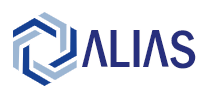In rail and industrial infrastructure, the enclosure is often seen as an afterthought. Yet, poorly designed or installed cabinets can lead to overheating, service interruptions, pest intrusion, and high maintenance costs. Whether you’re working trackside or in a plant environment, understanding how to specify, install, and maintain modular enclosures can dramatically improve reliability, safety, and sustainability.
This article compiles real-world practices from experts in the field — like those at Alias Trading UK and Alias Groupe — to help infrastructure professionals take a smarter, longer-term approach.
1. Start With the Right Cabinet Design
A modular cabinet isn’t just a weatherproof box. It’s a structural and electrical extension of your system. Here’s what to consider from day one:
🔧 Passive Thermal Management
Fans and HVAC units may seem like quick fixes for heat, but they introduce failure points. Passive cooling, via airflow design and heat-dissipating materials, is a far more reliable choice — especially for remote or inaccessible sites.
🐀 Pest and Environmental Sealing
Vents and cable entries should be sealed against rodents, insects, and dust. Look for IP65+ rated designs and non-permeable gasket materials. Drainage channels should also be incorporated to prevent pooling or condensation.
📐 Modular Repairability
Select designs that allow for easy panel or section replacement. This minimizes the need for full replacements over time and supports a circular economy model in line with modern ESG targets.
🛠️ Toolless or Quick-Access Panels
In emergency situations, time matters. Cabinets designed for rapid access, without excessive tooling or disassembly, can support both safety and uptime.
2. Plan for Installation Efficiency
Installing cabinets on live or near-live sites comes with tight constraints. Use these practices to make it safer, faster, and more cost-effective:
🧭 Pre-Assembly
Assemble modules and test wiring off-site. This reduces complexity during final installation and allows for better quality control. Alias Groupe uses this approach across Europe to reduce install times and minimize human error on-site.
⏱️ One-Shift Install Targets
Aim to complete each installation within a single shift (typically 6–8 hours). With the right preparation, this is achievable even on live-track sites — a technique often used by Alias Trading UK in the UK rail sector.
📋 Digital Documentation
Use tablets or smartphones to capture photos, checklist sign-offs, and test results. This improves traceability and compliance with ISO and local safety standards.
🔩 Minimise Toolsets
Simplify your toolkits by using modular designs with unified fasteners and fittings. This reduces on-site delay and enhances safety by avoiding unnecessary tooling changes.
3. Optimize Internal Layouts for Long-Term Reliability
The internal arrangement of a cabinet can have a bigger impact on uptime than most people realise. These layout tips are based on years of field feedback:
🔥 Spread Out Heat-Generating Components
Avoid clustering inverters, relays, or transformers. Distribute them to reduce localised thermal stress.
📏 Respect Cable Bend Radius
Overly tight bends can reduce signal integrity, increase EMI, or degrade cables over time. Use cable trays, brackets, and spacing clips to ensure consistent geometry.
🎛️ Use DIN Rails and Uniform Mounting
Standardising internal structure makes it easier to trace, troubleshoot, and replace components. It also improves safety during maintenance.
🧾 Label Everything
Cable markers, circuit labels, and terminal IDs save hours in diagnostics — especially under pressure or during outages.
4. Choose the Right Materials for the Environment
A one-size-fits-all approach rarely works for enclosures. Matching material performance to the site conditions is essential:
🌫️ High-Humidity and Coastal Zones
Use marine-grade aluminium or stainless steel. Standard steel corrodes faster even with coatings, while composites may warp under UV.
🧪 Chemical Plants or Rail Yards
Choose coatings that are resistant to diesel vapour, oil residue, or corrosive gases. Powder coatings and anodised finishes are common in industrial designs by Alias Groupe.
🧯 High-Risk or Public-Facing Sites
Consider cabinets that meet EN 1627–1630 security classes. These ratings ensure resistance to vandalism and forced entry — a requirement for some rail and urban installations.
5. Maintain Proactively, Not Reactively
Proper maintenance isn’t just about fixing faults — it’s about extending the life of your investment. Here’s a preventive maintenance approach that works:
📋 Quarterly Visual Inspections
Look for corrosion, seal failures, cable fraying, and insect nests. Use a checklist to ensure consistency across technicians.
🌡️ Internal Climate Monitoring
Install passive or connected temperature/humidity loggers to monitor interior cabinet conditions. This data can inform both service schedules and component choice.
🔧 Vibration Zone Retorquing
In high-traffic or high-vibration areas, fasteners can loosen over time. Periodic torque testing reduces failures from terminal loosening.
📸 Maintain a Photo Log
A simple photo record helps spot trends — such as water ingress or surface deterioration — before it becomes critical.
6. Apply Sustainable Practices From Start to Finish
Sustainability doesn’t require a huge budget or new technology. It starts with smart, small choices:
♻️ Waste Segregation On-Site
Separate cardboard, metal, and composite packaging waste directly on site. Provide bins and signage to installers — a low-cost but effective solution.
🔁 Modular Part Reuse
Instead of replacing entire cabinets, reuse enclosure panels, subframes, or cable trays when upgrading. Alias Trading UK incorporates this practice into their cabinet upgrade programs.
🛠️ Avoid Permanent Fixings
Where possible, use reversible fasteners and brackets to support future cabinet repositioning or retrofitting.
🚚 Delivery Consolidation
Batch deliveries of hardware and tools can reduce transport emissions and simplify logistics — especially useful on multi-site rail upgrades.
Final Thoughts
Whether you’re maintaining a national rail network or running industrial automation in a remote facility, cabinet design, installation, and upkeep matter. Smart decisions today prevent failure tomorrow — and help you operate more sustainably in the long run.
Both Alias Trading UK and Alias Groupe support modular, future-ready infrastructure built around these exact principles. By embedding best practices into each stage of your project, you don’t just solve problems — you prevent them.
Need help assessing your current enclosure setups or planning new ones?
Visit www.aliastradinguk.com or www.alias-groupe.fr to explore practical guides, modular solutions, and expert insights from teams working across Europe and the UK.
